Marie Čermínová (1902 – 1980), was a Czech Transgender Artist mostly known as Toyen in the art world. Born in Smíchov, Bohemia, she lived much of her life in Paris. She left home at the age of 16 and worked at a soap factory in Zizkov while putting himself through school.
During her 60-year career she was created a huge body of work including paintings, drawings, collages, illustrations and a selection of book covers that she designed. She was also a prominent member of the surrealist art movement.
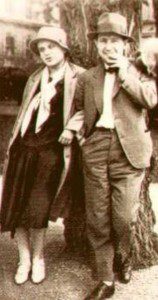

Marie Čermínová (Toyen) as a woman.
Despite the insistence of some historians to use the feminine case while referring to Toyen, he referred to himself in the masculine case and because of that, we will also refer to her as he.
The name Toyen was for him a metaphor, an ambiguous identification of a character. It was the perfect pseudonym for one alienated in the modern world, one who radiated her/his desire in all directions – to the outside world, to others and to her/himself..
Toyen is also sometimes associated with the French term citoyen (which means citizen). “Much rather it is the identity of the motion which the wearer allows you to identify the various” I “and in which gender” inversion “changes in gender ‘subversion'”- Martin Pachmanová.
Bohuslav Brouk interpreted Toyen as an anagram of the sentence, “to je on”, which translates to “it is he”.
Setting the name aside, from artistic, political and personal point of views, he was one of the most independent creative artists in the last century.
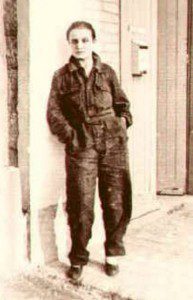

Toyen (Marie Čermínová) as a man.
A prominent female member (even as a man) of the prewar Czech avant-garde, the painter Toyen had a richly various career that took him from Cubism, through the painterly abstraction of “Artificialism, “to an extended Surrealist period.
Toyen rejected his name (Marie Cerminova) and chose to pursue his career as an artist under an assumed name – a mysterious name without a gender.
He broke all links to his family in favour of several friends who were “bound by choice”. Toyen protested against bourgeois tendencies and endorsed the anarchist movement.
He disclaimed any suggestion that he play a traditional woman’s role by leading an independent way of life and, on the other hand, displaying no compromise for the quality of his work.
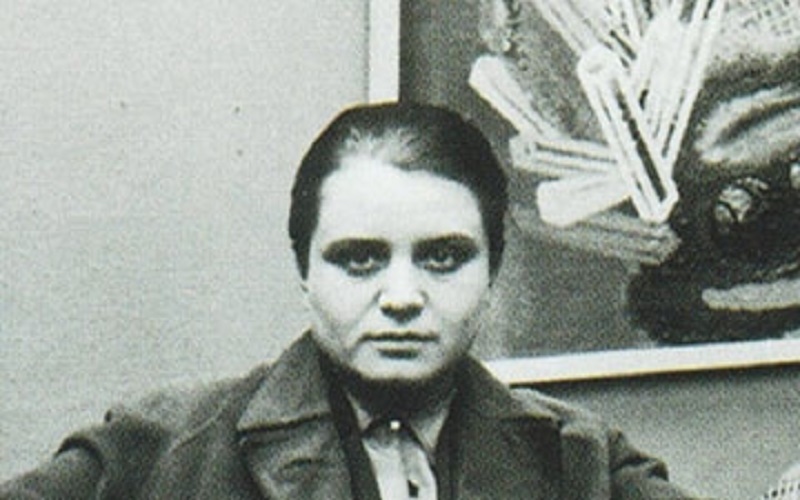

c. 1931
But physically, Toyen was a woman and his life was full of personal turbulences and misfortunes, yet despite all of this, his work retained authenticity and inner consistency.
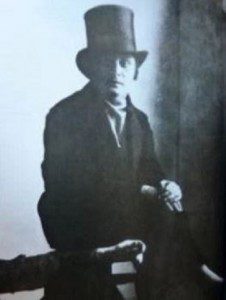

Perhaps his life took this form because the history of Czech avant-garde is primarily a men’s field of competence.
All of the notable artists working in the field of so-called high art, including painting and sculpture, were almost exclusively the domain of men. Some believe this was where his cross-dressing came from.
But looking at his art, I believe otherwise.
Known to show up with a top hat and bow tie, he referred to himself as a man in gender and only spoke to and maintained friendships with men.
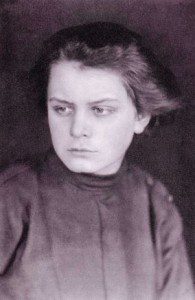

Sexy and erotic women and all of their various parts.
…More provocative than even his appearance were his works heavily imbued with heartfelt erotic themes.
Work that was taboo at the time, and in a space dominated by men.
So many of these were shocking, and represented the biggest taboos including lesbian desires.
We’re talking… graphic desires.
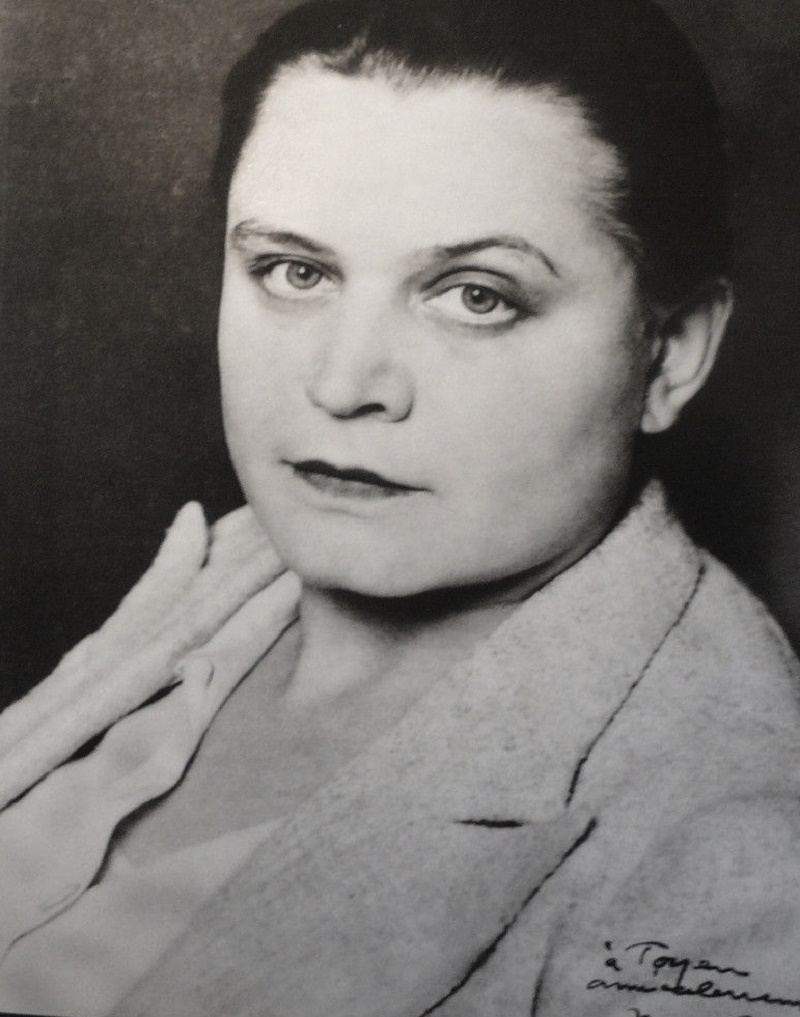

Toyen. Photo: Man Ray
Toyen’s work often showed lesbian stylization, but that does still not explain whether it is just art or if he wanted to somehow let the world know his true desires.
In other words, Toyen’s painting was free of any ambition.
It was natural and exhibited how and what Toyen saw in the world.
He never conformed to the requirements of gallerists and art critics.
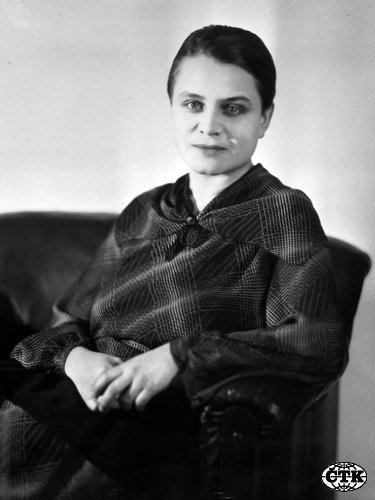

c. 1930, Toyen (born Marie Čermínová).
Exhibiting his paintings was also an opportunity to express his friendship with the Surrealist poets, who wrote poems for him or text for catalogues.
Although the life and work of Toyen greatly contributed to the history of feminist art and art criticism, Toyen never openly expressed his sympathy or support of feminism.
Toyen also never spoke openly of his sexual orientation.
From 1919 to 1920, Toyen attended UMPRŮM (Academy of Arts, Architecture and Design) in Prague. In the early 1920s Toyen travelled to Paris, and soon after returned there with Štyrský with whom he was a member of the foremost Czech avant-garde group, Devetsil.
He met Surrealist poet and artist Jindřich Štyrský on the island of Korčula (a Croatian island in the Adriatic Sea) and began working closely with him. They remained close friends until Štyrský’s death.
In 1923 he and Štyrský exhibited with the group.
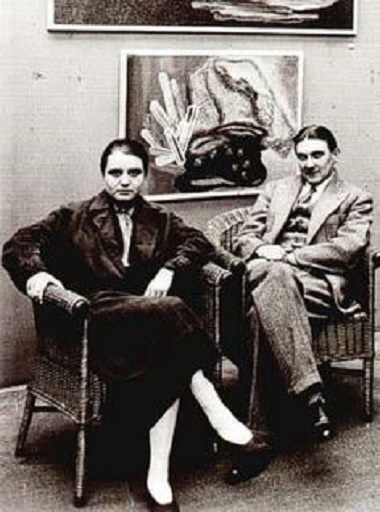

During the early 1920s, the artist was primarily influenced by Cubism. However, just before his first visit to Paris in 1925, he went through a brief yet remarkable “primitivist” phase.
Among the oil paintings and works on paper from this period is the erotic Paradise of the Blacks, a medium-sized canvas that shows a group of naked black men and women making love and, in general, enjoying the freedom of nature far from civilization.
What today might seem like an eroticization of ethnic “otherness” was in the mid-1920s an expression of both Toyen’s hedonism and his desire to overcome social and sexual taboos in the petit bourgeois world of pre-World War II Czechoslovakia.
While living in Paris, Toyen and Štyrský founded an artistic alternative to Abstraction and Surrealism, which they dubbed Artificialism.
Toyen and Styrsky described Artificialism as “an abstract consciousness of reality … defined by poetic perceptions of memories.”
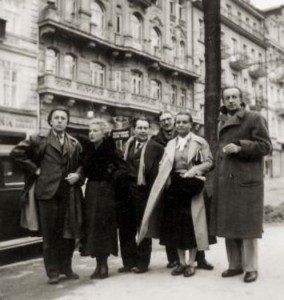

c. 1935, French and Czech surrealists in Prague – From left: André Breton, Jacqueline Breton, Karel Teige, Jindřich Štyrský, Toyen, and Paul Eluard.
Marked by innovative painterly techniques, such as dripping or spray painting through grids, stencils and various objects, or layering in thick and tactile structures, Toyen’s Artificialist style emphasized the material properties of paint, thus radicalizing the conventions of painterly abstraction at the time.
Toyen and Styrsky returned to Prague in 1929.
Styrski then began publishing a magazine, the Revue érotique, filled with drawings by Toyen. At that time, Toyen also illustrated Justine by the Marquis de Sade.
Looking at his body of work now, one can immediately see the numerous drawings with explicit sexual content as well as those with homoerotic imagery. All of these works may help to break the critical silence regarding the artist’s sexual orientation.
By the end of the 1920s, Toyen’s work became increasingly surrealistic.
In 1934, he was one of the founding members of the Czech Surrealist Group in Prague, which cooperated closely with André Breton’s group.
One year later, Breton and the poet Paul Eluard visited Prague and began a lifelong friendship with Toyen, interrupted only by the Nazi occupation of Czechoslovakia.
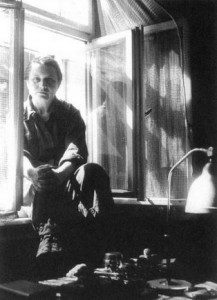

Toyen in 1943.
During the years of occupation, Toyen’s art went underground as Surrealism was another of the “Degenerate” art movements banned by the Nazis.
Toyen, though he worked throughout the war years, could not exhibit his work – and he went into hiding.
He did however continue to produce provocative work during the war.
When you see the pieces he created during this time, you can see (and feel) the irrationality, frustration and grief of the war.
Sadly, Toyen also lost his artistic partner Jindřich Štyrský during the war.
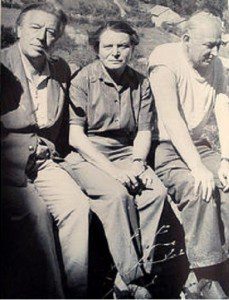

c. 1956, André Breton, Toyen and Benjamin Péret.
Toyens works gained the attention of avant-gardists in Paris, where Toyen soon became a prominent figure in the Surrealist movement.
His art has been admired not only by Andre Breton but also by a host of recent scholars such as Whitney Chadwick, Renee Riese Hubert and Annie Le Brun.
In Toyen’s Surrealist period, we see specters of nature, disintegrating human torsos, war machines and vestiges of everyday reality seem to merge in phantasmagoric dream images.
Elements of Surrealism recur in pieces he produced throughout the remainder of his life and as a whole reaffirms Toyen’s position as an important Surrealist painter.
After the war, he showed his work briefly in Prague before fleeing to Paris in 1947 (together with Jindrich Heisler) to escape the Stalinist takeover.
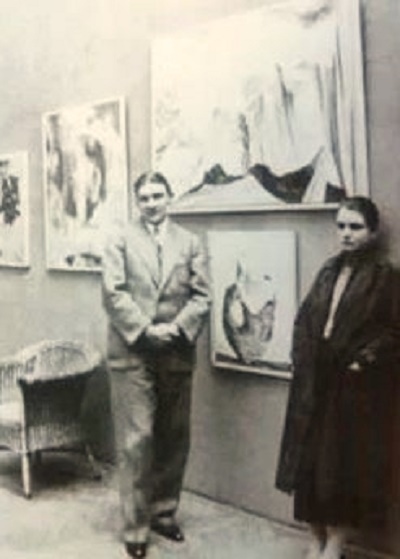

Back in Paris, he worked until his death with André Breton, the French poet and anarchist Benjamin Péret, as well as with Czech painter and poet Jindrich Heisler.
Toyen regarded painting as a natural need free of any ambition and painted whatever came into his mind, often to what would have been a shock had people known he was a woman.. Another great hint in the little-known complexity of the artist’s long career.
After his death in 1980, an exhibition of his work and of the collaboration with his Czech colleagues was shown at the Centre Pompidou, and in the following years, a number of important retrospectives were held.
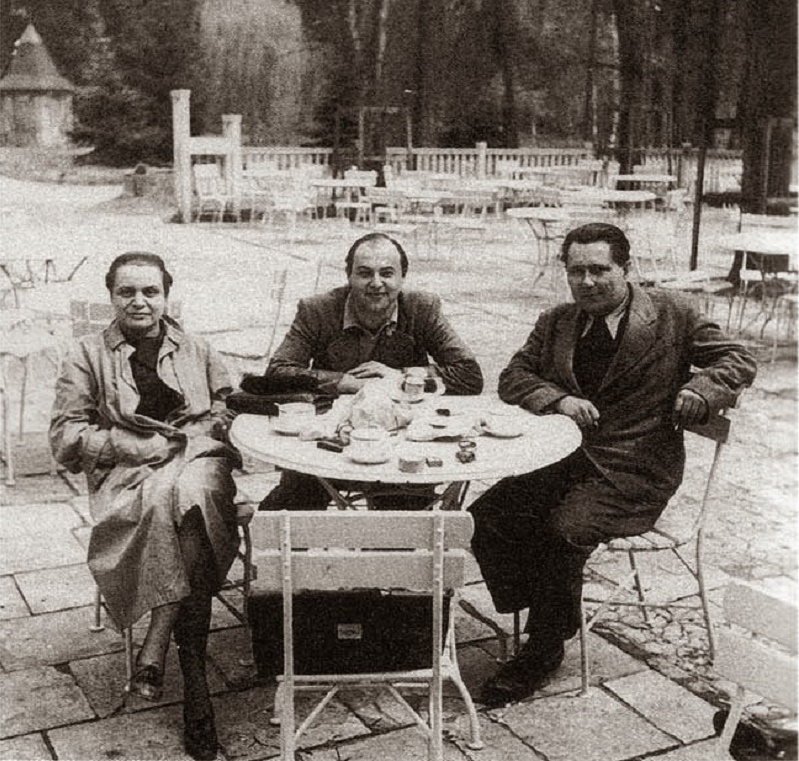

c. 1940, Toyen (as a woman again), Jindrich Heisler and Karel Teige in Prague.
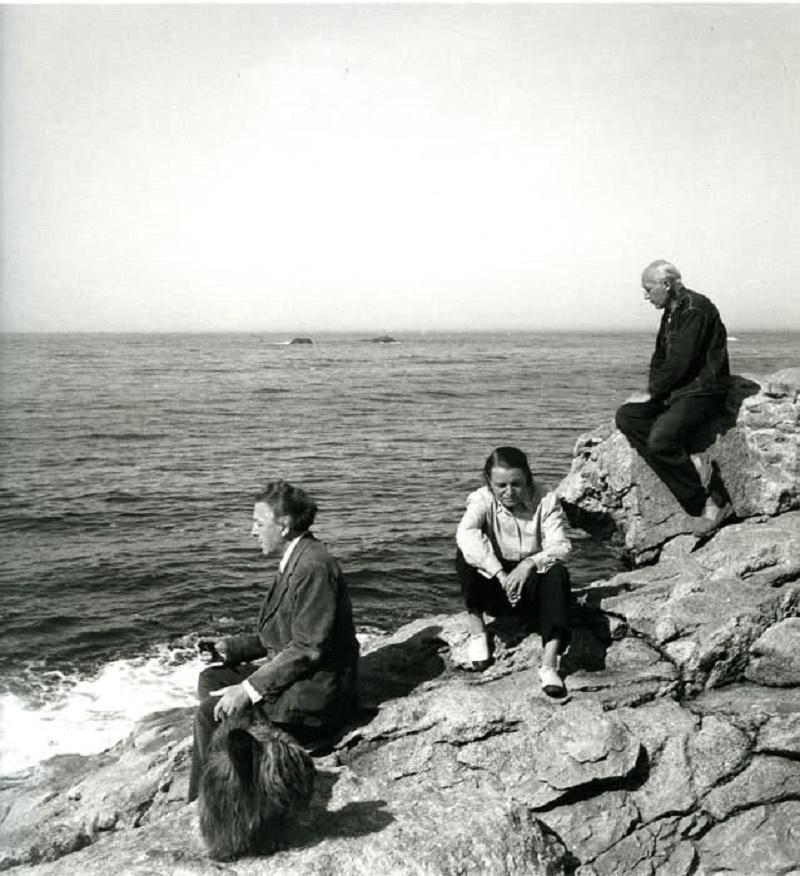

c. 1947, André Breton, Toyen and Benjamin Péret by Elisa Breton.
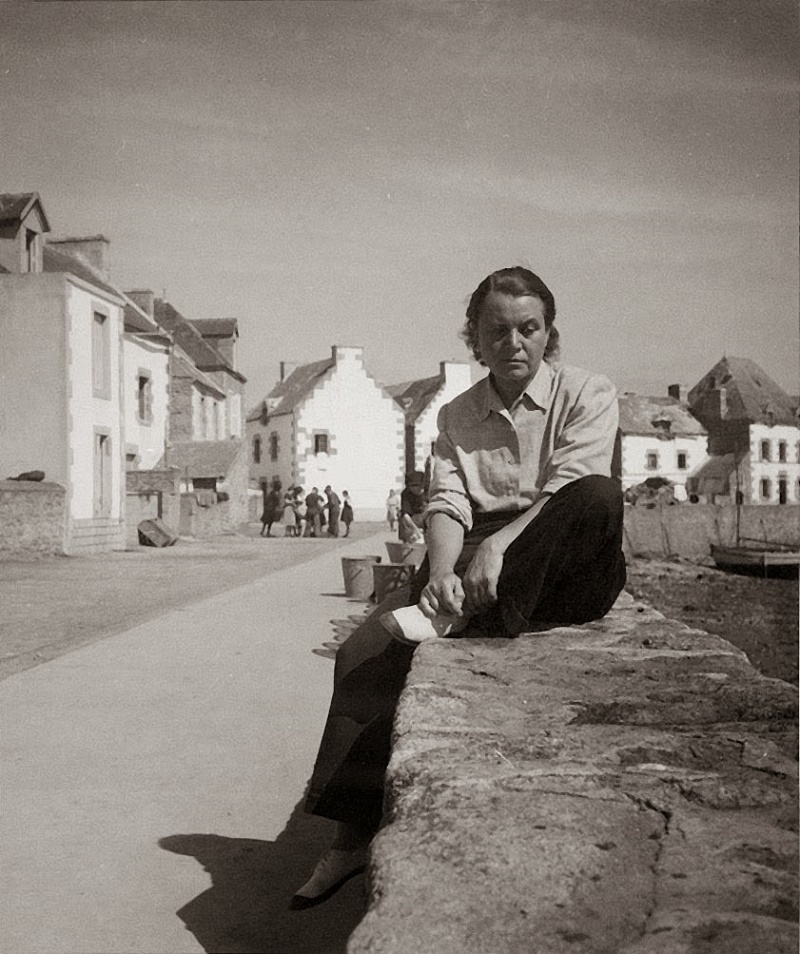

c. 1950’s Toyen (as a man again) in France, by André Breton
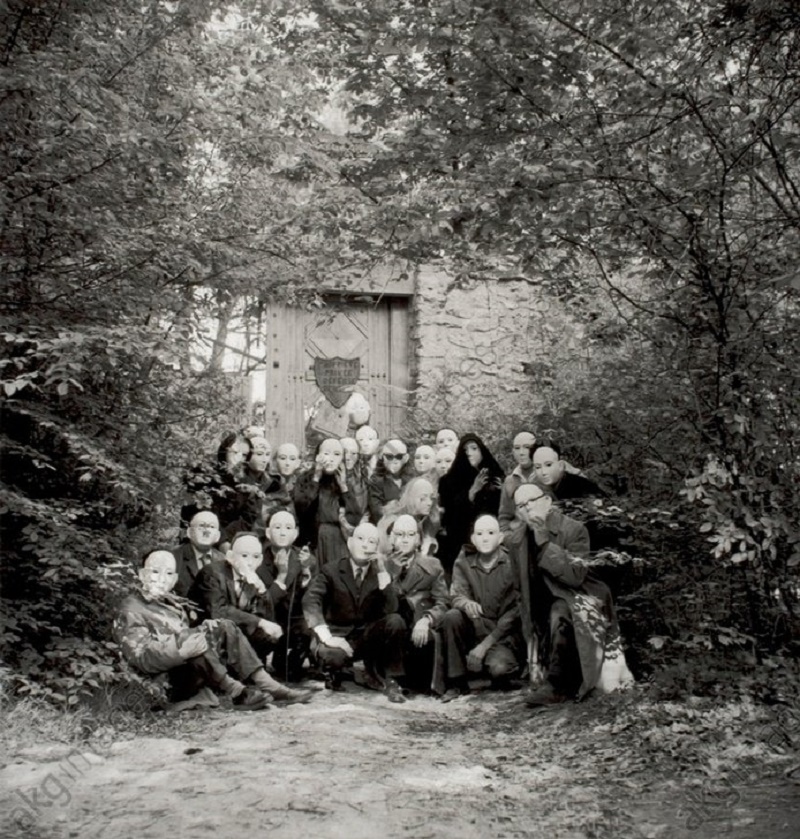

c. 1960. Surrealists wearing masks at a gathering at the Désert de Retz, France (André, Elisa and Aube Breton, G.Goldfayn, Toyen, E.Jaguer, G.Legrand, N.Espagnol, A.Joubert, R. Benayoun, J.Pierre, M.Van Hirtum and others). Photo: Denise Bellon. Source: AKG Images
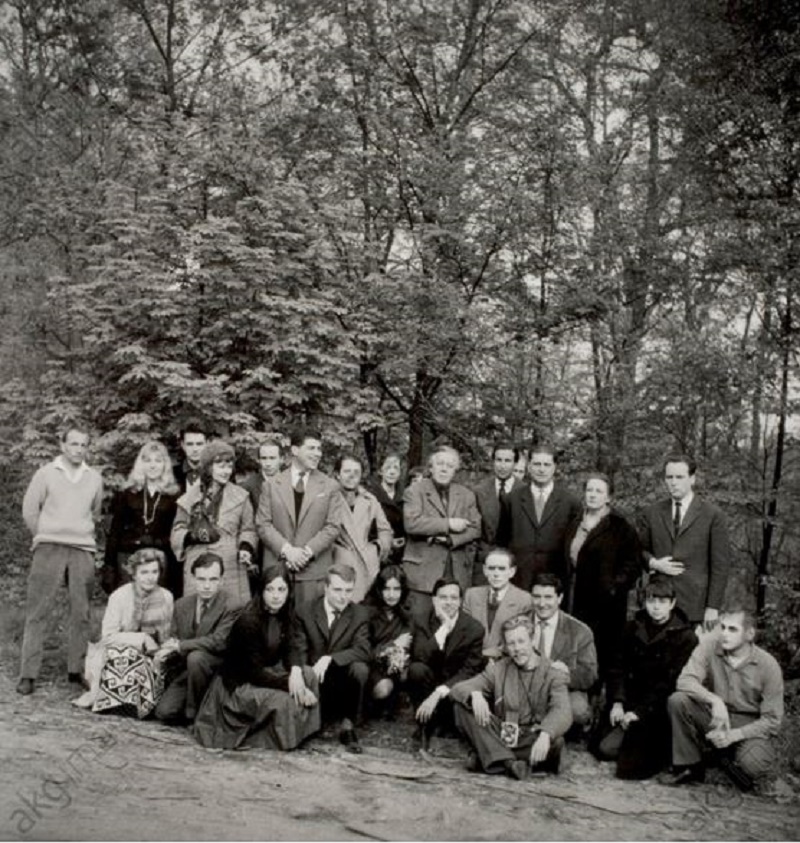

c. 1960, Artist’s Society with André, Elisa u. Aube Breton, G.Goldfayn, Toyen, E.Jaguer, G.Legrand, N.Espagnol, A.Joubert, R. Benayoun, J.Pierre, M.Van Hirtum. Photo: Denise Bellon. Source: AKG Images
Toyen died on November 9, 1980 in Paris.
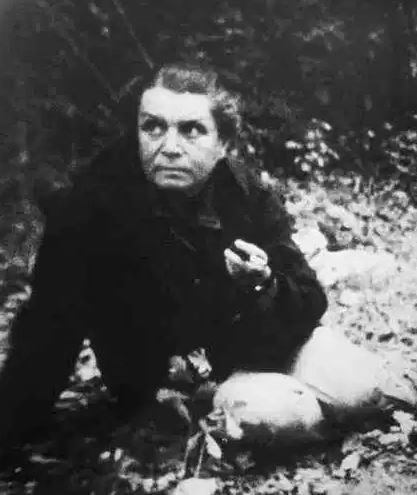

His funeral was held with the participation of his closest friends in the Paris des Batignolles cemetery where he is buried near his friends: Jindrich Heisler, André Breton and Benjamin Peret.
The Czech press made no mention of the death of the great artist known to the world only as Toyen and the estate was sold in three auctions under the pseudonym Toyen.
If you are further interested in the life and work of Toyen, we highly recommend you read the online dissertation entitled Eoticism, Identity and Cultural Context: Toyen and the Avant-Garde. You may also want to read, In Pursuit of Toyen: Feminist Biography in an Art-Historical Context.
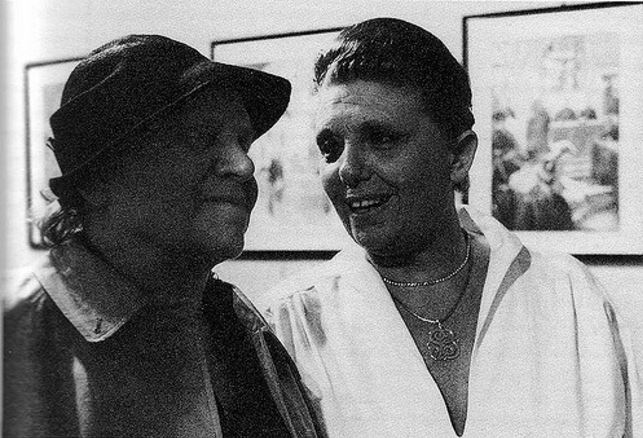

Toyen and Sophie Babet in 1977.
Sources: Galerie Art, University of Pittsburgh, Wikipedia, Wiki Art, Prague Writer’s Festival, Weimar Art, Cranes are Flying.
Thank you in advance for your support…
We know that you could spend hours, days, weeks and months finding some of this information yourselves – but at this website, we curate the best of what we find for you and place it easily and conveniently into one place. Please take a moment today to recognize our efforts and make a donation towards the operational costs of this site – your support keeps the site alive and keeps us searching for the best of our heritage to bring to you.
Remember, we rely solely on your donations to keep the project going.
Thank you in advance!
If you have not already subscribed to get TresBohemes.com delivered to your inbox, please use the form below now so you never miss another post.

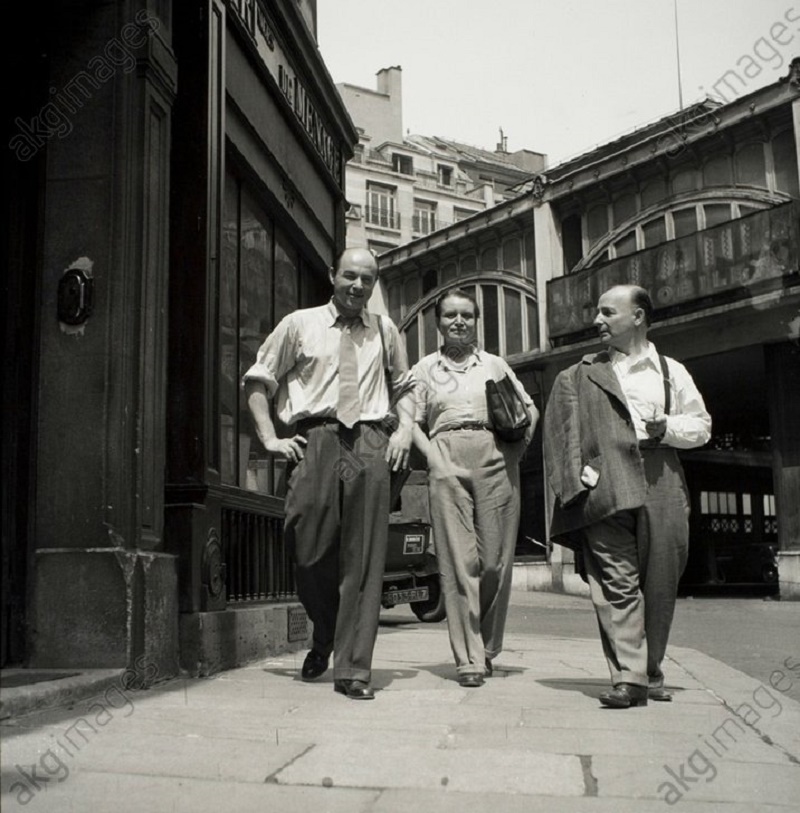



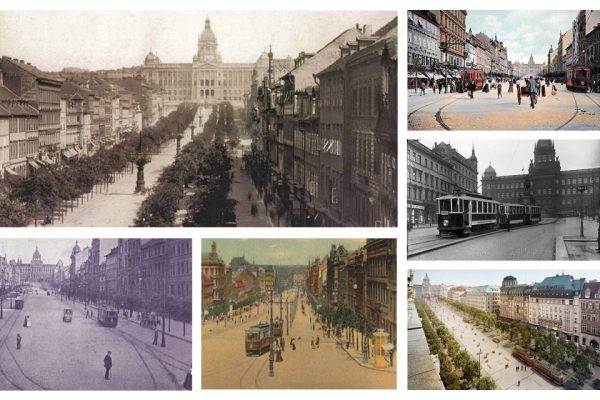
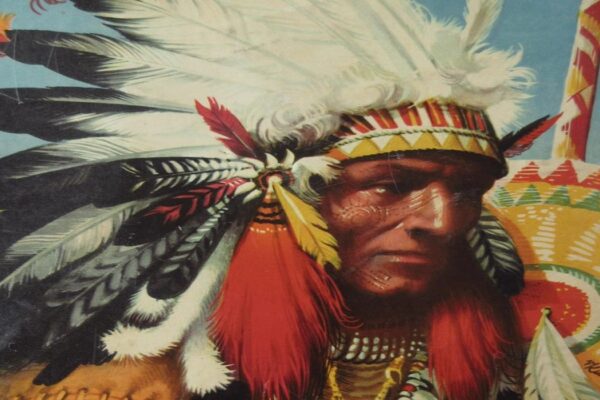
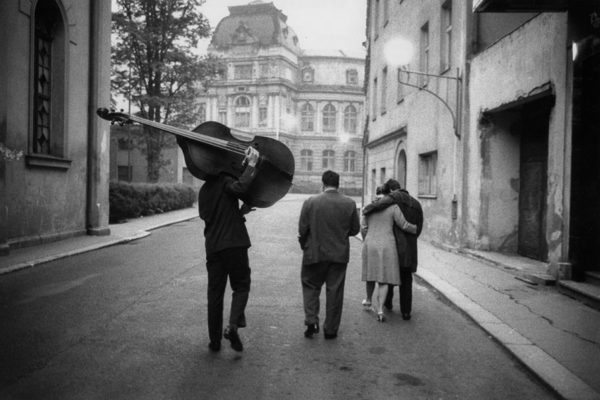















This is a very interesting portrait of a unique woman struggling to create her art in a male dominated world. Thanks for sharing this.